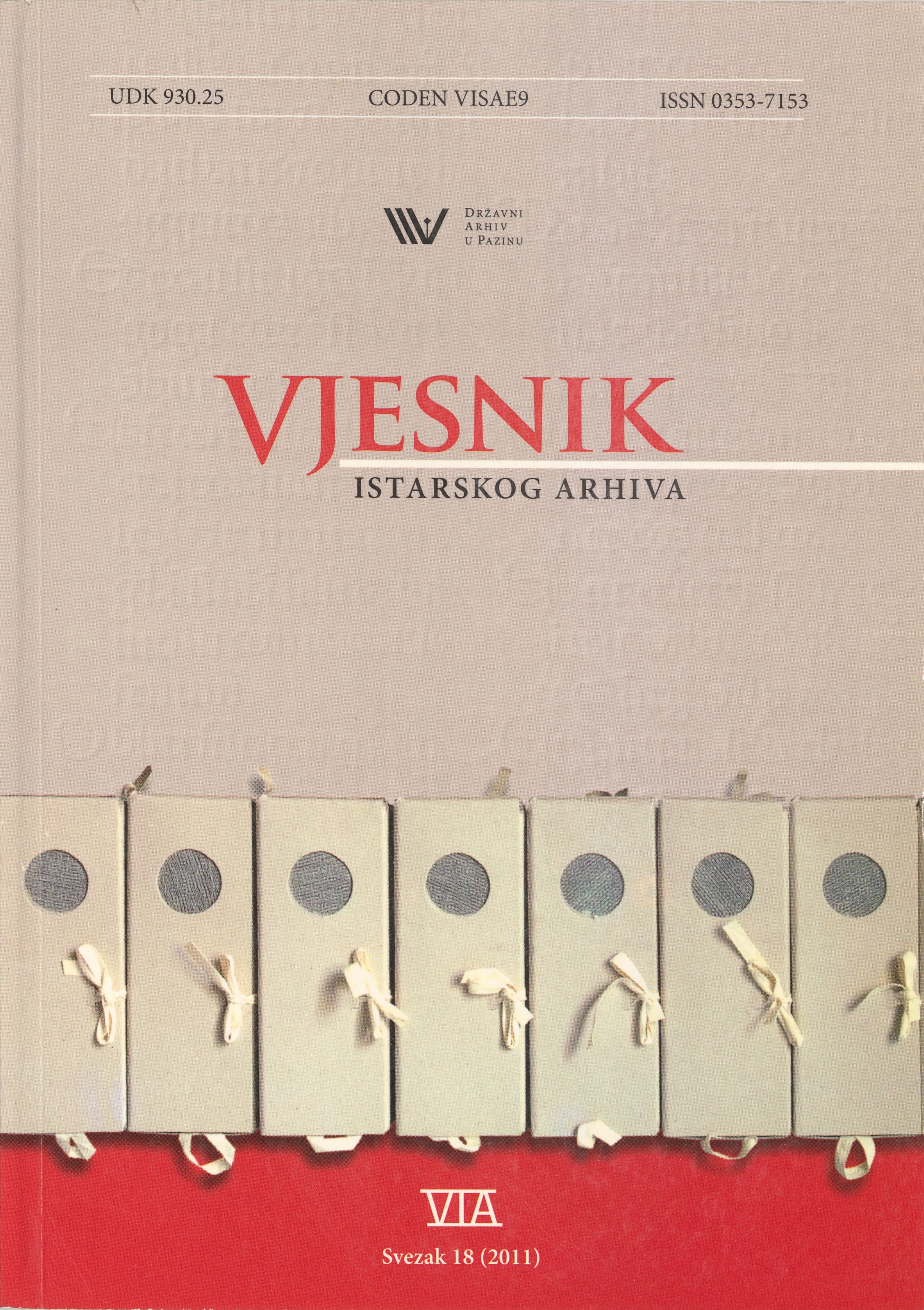Contribution to the study of the land property structure of the Medieval Istria (with a focus on the property of the Diocese of Freising)
Keywords:
properties of the Bishops of Freising, Margravate of Istria, High Middle AgesAbstract
This contribution firstly reproduces the content of the two widely known and quoted deeds of donation of the Istrian fiscal ownership of the German King Henry IV to the institutions of Freising: Monastery of St. Andrew (1062) and Church dedicated to St. Mary and St. Corbinian (1067). Apart from the facts that both estates were located in Istria, the deeds of donation were similar because of some persons who are mentioned in them: the donor is the German King Henry IV, and in both cases the donees are Freising institutions, both records mention the Margrave Ulrich, and Ellenhard, the Bishop of Freising, whose loyal and faithful service is mentioned as the reason for these donations. The subject of the first deed of donation is the fiscal rights to the places Pyrian and Niwenburch, while the subject of the second deed is villages and castles Kubed (Cvbida), Predloka (Lovnca), Osp (Ozpe), Rožar (Razari), Truške (Trvscvlo), Šterna (Steina) and Sv. Petar (Sanctepetre). Historians have allocated the place names contained in the first deed in various ways, but also the locations of the villages and castles of the second remain quite vague. The deeds of donation mentioned a series of privileges of economic importance. Among the church nobility in north-western Istria in the 11th century, the Patriarchs of Grado and Aquileia, together with the institutions of Freising, possessed vast land properties, which creates a varied picture of the contemporary proprietary relationships. The properties mentioned by the Deeds of Donation to Aquileia in 1062 and 1102 are found in the same location as the properties which were given to the above mentioned institutions in Freising. Considerably less known and even less quoted in relation to the Freising Istrian properties is the document mentioning the jurisdiction of the Diocese of Freising over the Piran area dated to the beginning of the 13th century. Between 1201 and 1207 the clergy and citizenry were involved in a lawsuit with the Diocese of Koper regarding the oil tithe of Piran. On 18 December 1201 thirteen people bore witness that Notary Dominik, who wrote the Deeds of Donation to the representatives of the Piran clergy and citizenry in the said dispute, was appointed notary by the Count of Piran, i.e. by Podestat Berthold. Six witnesses confirmed that the right to appoint the notary was granted to him directly by the Bishop of Freising, who in his turn received it from the monarch. According to the testimony of two witnesses, Berthold would have received the right to appoint the notary (and of the counts) indirectly from Count Meinhard who received it from the Bishop of Freising to whom it was granted by the monarch. There are a few very interesting people mentioned in the record, first of all Count Meinhard and Count Berthold. The latter is, in fact, Margrave Berthold IV of the Andechs Family (1188-1204). His parents were Margrave Berthold II and Hedwiga Wittelsbach. Apart from being the Margrave of Istria (1188-1204), he was Duke of Dalmatia, Croatia and Merania (?1180-1204). The question where the affection of the Freisings to the Andechs Family stemmed from has a simple answer. The Istrian Margrave Berthold III, father of Berthold IV of Merania, and Gisela von Dießen, mother of Otto II, the Bishop of Freising, were siblings. Berthold IV, who in the lawsuit between the people of Piran and the Diocese of Koper regarding the oil tithe, appointed the Notary Dominik of Piran in 1201, after receiving this right, as witnessed by the above mentioned witnesses, directly from the Bishop of Freising, his cousin. The Dießen-Andechs Family deliberately guided a part of the male posterity to influential ecclesiastical positions, such as the position of the Bishop of Freising. Their descendants did not forget their origins, not even as church officials, and systematically strengthened the lay government and dynastic property of their relatives.
Downloads
Published
Issue
Section
License

This work is licensed under a Creative Commons Attribution-NonCommercial 4.0 International License.

